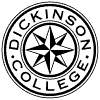From 1930-1934, there were four different changes in the president of Dickinson College. Obviously this would have a profound effect on the school policies, and both faculty and student morale. The reasons for these changes range from death to somewhat of a scandalous affair. Filler's death did not leave as many scars on the college as a whole as did the resignation of Waugh.
In September of 1933, Bishop McDowell resigned from the board. He had been the one who first nominated Waugh for the presidency. The reason stated in the Dickinson Alumnus for McDowell's resignation was "because he did not have the strength to give service and did not want to be nominally a trustee".1 However, it seems somewhat ironic that he chose to resign following Waugh's resignation. In addition, Walter Stauffer, another trustee, wrote Morgan a letter dated July 6, 1933. In the letter, Stauffer states, "In reference to the situation concerning Dr. Waugh, I do not question the report of the committee but I do object to the procedure followed".2 Stauffer felt there was a lack of clear cut statements concerning the way things happened.
Morgan wrote a letter, dated July 6, 1933, to the students informing them of Waugh's resignation. In this letter he states, "Some changes will be made in the course of study open to you next year, but probably none of that will compel a change of your present electives".3 The letter was also telling students that the Board of Trustees had reduced the amount of money available for scholarships and loans in the coming year.
Students were incredibly shocked and upset by Waugh's resignation and they voiced their opinion in The Dickinsonian. Most students agreed with Waugh's progressive reforms. The following quote was printed in The Dickinsonian, "We hope that some of the reforms adopted during his administration will be continued or only slightly modified to suit changed conditions".4 Most students agreed that Morgan was a good president, but they felt that Waugh's "progressive reforms in athletic and social relations, his remodeling of the absence system, and his plan for financing The Micocosm have made his absence felt".5 Spencer B. Smith, the editor of the student run newspaper requested that Spahr explain the resignation of Waugh and the subsequent appointment of Morgan, but Spahr refused. Spahr insisted that the Board had acted wisely and asked that the manner be dropped.6 A low morale existed among students and many felt that they could not trust the Board of Trustees. "One of the achievements aimed at by Waugh was to encourage students in developing a college spirit first and without lessening their loyalty to campus organizations".7 Therefore, it was obvious that students were hurt and upset by the affair. The low morale of students concerning the Board of Trustees was bound to spread into other aspects of the college.
The Dickinson College community needed to find a stable leader who would be able to repair the scars. Hopefully, Fred Pierce Corson would be able to offer this stability and move forward into the future.
The following is a cartoon taken from the 1934 Microcosm and it depicts the feeling among students that Morgan takes over after every president.8
Heather Reardon
 |
|
Dickinson 1934 is a project of Prof. Osborne's History 204 Class, Fall Semester 2000. |
Endnotes
1.
"Dr. Waugh's Resignation as President of College." The Dickinson
Alumnus
Sept. 1933: 8-9.
2.
Letter from Walter S. Stauffer to President Morgan. July 6, 1933.
3.
Letter from President Morgan to the students of Dickinson College.
July 6 ,1933.
4.
"Morgan Again Assumes Head of Dickinson." The Dickinsonian 28 Sept.
1933.
5.
The
Microcosm. Carlisle: Dickinson College, 1934.
(152).
6.
"Dickinson Students Ask Why President Resigned." Philadelphia
Record 4 Nov.
1933.
7.
"Dr. J. H. Morgan Begins Duties as Dickinson Head." Harrisburg
Telegraph 27
June 1933.
8.
The
Microcosm. Carlisle: Dickinson College, 1934.